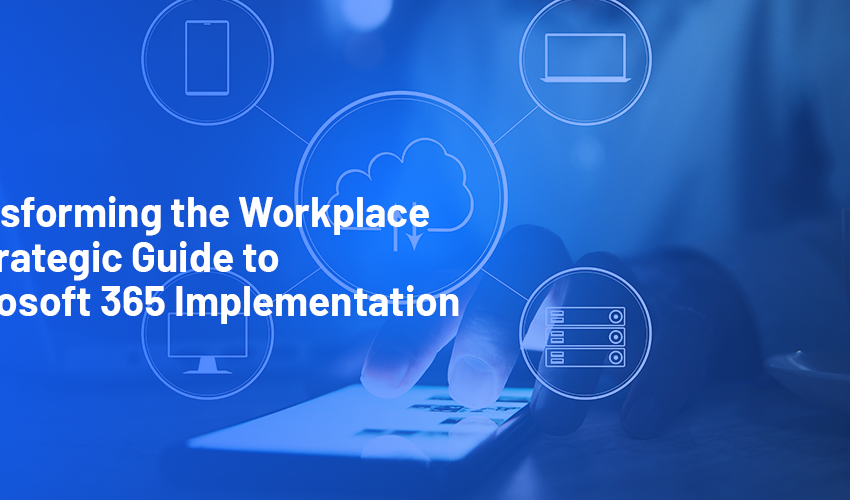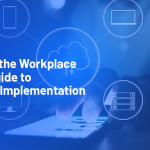Transforming the Workplace: A Strategic Guide to Microsoft 365 Implementation
Microsoft 365 is a complete ecosystem that changes how your business communicates, collaborates, and delivers value. But adopting it without a plan can lead to confusion and underutilized potential. That’s why Microsoft 365 implementation must be strategic, human-centred, and deeply aligned with your business goals. Here’s how to get it right.
Why Microsoft 365 Implementation Is More Than a Tech Upgrade
Many organizations treat Microsoft 365 implementation as just another IT project. But it’s much more than that. When done right, it reshapes your workflows, enhances security, and fosters a culture of collaboration. It’s the difference between deploying tools and driving digital transformation.
Think about it: Microsoft Teams has transformed messaging into a digital HQ. For instance, SharePoint can power your internal knowledge base while serving as your document storage. So basically, the value of these tools lies not in their features, but in how you apply them.
Understanding the Phases of a Successful Deployment
A seamless Microsoft 365 rollout is built on structure. While each organization will differ, these phases provide a strong foundation for success:
1. Assessment and Readiness
Before you roll anything out, conduct a full assessment of your current IT environment. Are your systems compatible? Do your teams have the necessary access? During this phase, organizations often:
- Audit licenses and infrastructure
- Define business goals
- Identify user personas and use cases
Example: A global consulting firm conducted an internal audit and realized that only 40% of their teams used collaboration tools effectively. This insight guided their decision to restructure access rights and tailor training by department.
2. Planning and Design
This phase determines the architecture of your deployment. You define governance, configure tenant settings, and decide which tools will roll out first. It’s also where user adoption strategies begin.
Example: A mid-sized law firm started with Exchange Online and OneDrive before moving to Teams. The phased approach minimized disruptions and allowed for targeted onboarding.
3. Deployment and Integration
Here’s where the plan becomes reality. Tools are deployed, and integrations with legacy systems are configured. This is also when you start training your teams to ensure they’re mastering Microsoft 365.
4. Change Management and Support
You can’t drop a new ecosystem into people’s laps and expect instant results. User adoption is everything. Ongoing support, training sessions, and internal champions are crucial.
Example: A retail company used Microsoft Viva Insights to monitor employee engagement and adjusted their rollout based on real-time feedback.
Untitled10: Your Implementation Partner for the Long Haul
At Untitled10, we go beyond deployment. We understand that a platform as robust as Microsoft 365 needs more than a one-size-fits-all approach. Our team works with you to:
- Align Microsoft 365 with your unique workflows
- Design phased rollouts that respect your pace
- Offer user training and long-term adoption strategies
Whether you’re a startup modernizing internal comms or an enterprise coordinating global teams, Untitled10 ensures your Microsoft 365 implementation is smooth, scalable, and human-first.
What the Best-in-Class Organizations Get Right
Some companies not only implement Microsoft 365 effectively, but they also build thriving digital cultures around it.
Microsoft’s Own Deployment Strategy
Microsoft’s internal IT team used a hybrid deployment model when rolling out 365 across its global workforce. Their focus was on identity management, security compliance, and change enablement. The result? A connected, secure workplace model that scaled to over 180,000 employees without disrupting productivity.
L’Oréal: Empowering Teams with Tools That Fit
L’Oréal tailored its Microsoft 365 deployment to support hybrid work, giving different departments access to the apps they actually needed. IT collaborated with HR and Communications to ensure tools like Teams and Yammer were used to strengthen culture across regions. Their agile rollout led to faster onboarding and real-time knowledge sharing.
Toyota: Building a Data-Driven Workplace
Toyota adopted Power Platform tools within Microsoft 365 to create custom workflows for HR and operations. Instead of relying on third-party apps, they empowered non-technical users to build forms and dashboards using Power Apps and Power BI. Their phased training program ensured wide adoption.
Plan Smart, Scale Fast
Microsoft 365 implementation is your chance to upgrade more than software; it’s an opportunity to future-proof your workplace. But it takes planning, adaptability, and the right partner to bring it all together.
With Untitled10 by your side, you gain more than IT support. You gain a creative and technical partner committed to making your digital transition seamless, intuitive, and lasting.
Frequently Asked Questions
How long does a Microsoft 365 implementation typically take?
The timeline varies based on company size, existing systems, and complexity. For small to mid-sized businesses, a phased rollout can take between 4 to 12 weeks.
Do I need to migrate all my data at once?
Not necessarily. Many organizations opt for staged migrations to minimize disruption and ensure data integrity. Prioritizing email and collaboration tools first is a common strategy.
What kind of training is recommended for employees?
Training should be role-specific and hands-on. We recommend a blend of live sessions, tutorials, and access to a support portal. This ensures employees not only use tools but also understand how to use them effectively.





